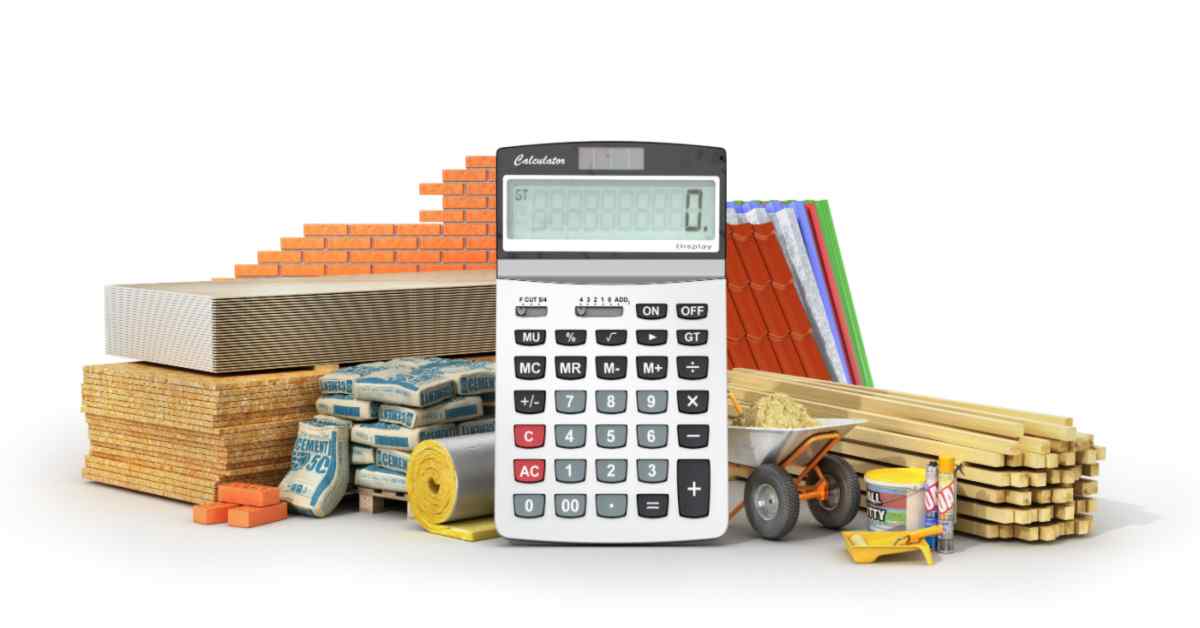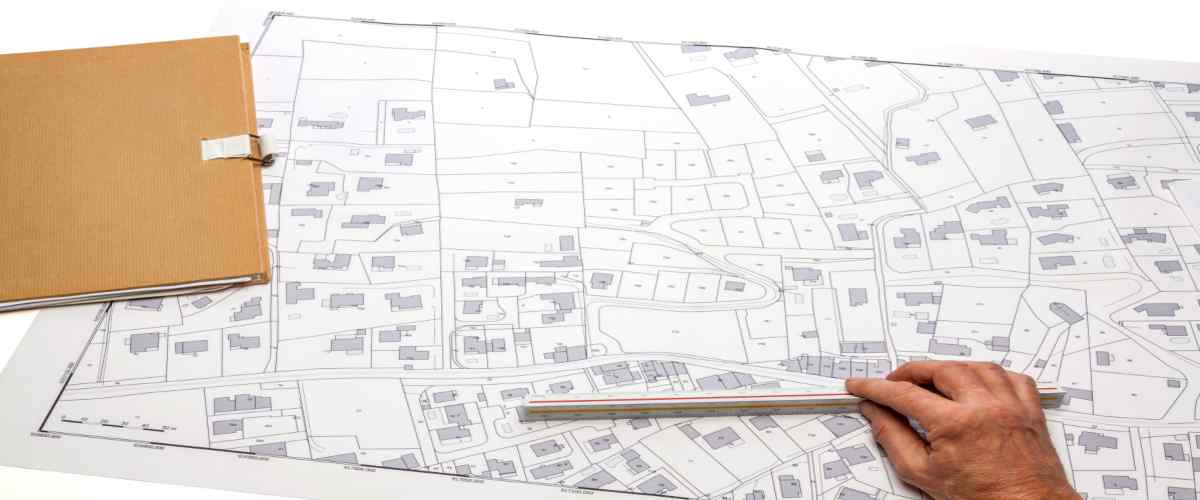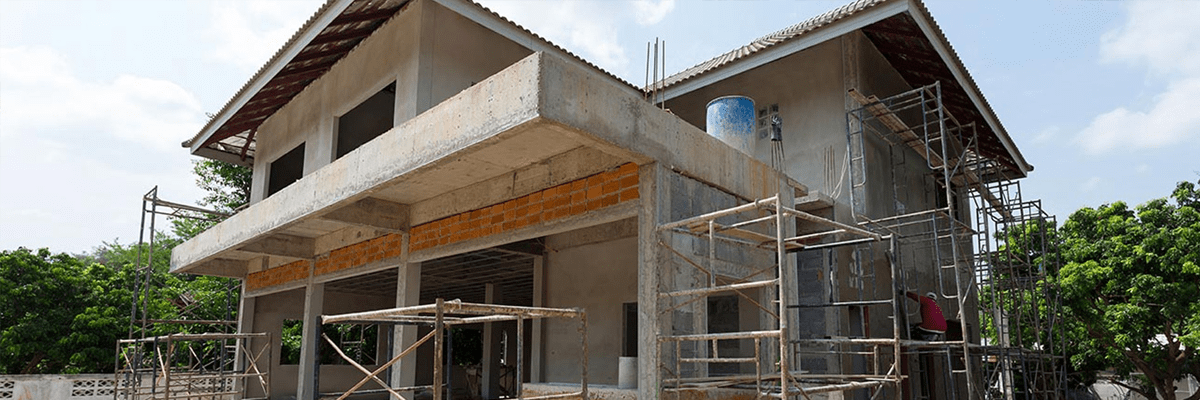Table of Contents
Quality Service Guarantee Or Painting Free

Get a rental agreement with doorstep delivery

Find the BEST deals and get unbelievable DISCOUNTS directly from builders!

5-Star rated painters, premium paints and services at the BEST PRICES!
Loved what you read? Share it with others!


Submit the Form to Unlock the Best Deals Today
Help us assist you better
Check Your Eligibility Instantly

Experience The NoBrokerHood Difference!
Set up a demo for the entire community
GST on Construction: A Comprehensive Guide
Table of Contents
In the realm of construction projects, navigating through the complexities of Goods and Services Tax (GST) is an essential task for developers, contractors, and property owners alike. The implementation of GST on the construction industry has significantly impacted the ecosystem, introducing new regulations and compliance requirements that demand careful consideration.
Understanding the nuances of GST on construction work is crucial to ensure seamless operations, financial prudence, and adherence to the law. This comprehensive guide aims to shed light on the various aspects of GST rate on construction contracts, providing you with the knowledge and insights needed to navigate this ever-evolving landscape.
Join us as we demystify GST on construction, delving into its implications, regulations, and the necessary steps to ensure your projects comply with the tax laws. Let's empower your construction endeavors with clarity and compliance in this new era of construction tax rate.
Quality Service Guarantee Or Painting Free

Get a rental agreement with doorstep delivery

Find the BEST deals and get unbelievable DISCOUNTS directly from builders!

5-Star rated painters, premium paints and services at the BEST PRICES!
Latest Update: GST On Construction
On July 28th, a significant relief was granted to homebuyers as the Gujarat High Court pronounced that GST on construction is applicable solely to the construction expenses and not the land costs. In a case pertaining to GST on construction, the court's verdict emphasized that it is the construction cost that should be taken into account for determining Goods and Services Tax liability, while the cost of the land would remain exempt from taxation.
The court's ruling establishes that GST on construction of residential property is not applicable to the actual land value or the undivided share during the sale of commercial plots, villas, or flats. Consequently, the land utilized for construction purposes falls outside the purview of GST. The taxation should only be levied on the expenditure related to construction. This judgment provides considerable relief to homebuyers who had been subject to GST charges based on the land's value.
The GST rate on construction services is generally 18%. However, there are a few exceptions to this rule. For example, the GST rate on affordable housing projects is 1%, and the GST rate on the construction of certain infrastructure projects, such as roads and bridges, is 5%.
The GST rate on construction materials varies depending on the type of material. For example, the GST rate on cement is 28%, the GST rate on bricks is 12%, and the GST rate on sand is 5%.
Basics of GST in Construction
The Goods and Services Tax (GST) is a comprehensive indirect tax reform that was introduced in India to streamline and simplify the taxation system. One of the significant sectors affected by GST is the construction industry. Understanding how GST applies to construction is crucial for developers, homebuyers, and all stakeholders involved in real estate projects.
GST Rates and Categories in Construction
In the realm of construction, GST for construction work plays a pivotal role in determining the tax implications for both developers and homebuyers. The classification of real estate projects into affordable and non-affordable housing categories sets the stage for understanding the applicable rates and
| Service/Material | GST Rate |
| Construction GST Rate (General) | 18% |
| Affordable Housing Apartment GST on construction services (from April 1, 2019) | 1%* |
| GST on Building Non-affordable Housing Apartment (from April 1, 2019) | 5%* |
| Commercial Apartments in REP (except RREP) | 12%* |
| Works Contract GST Rate (Material supplied by the contractor) | 12% |
| Works Contract Services HSN Code and GST Rate (Only labor supplied by the contractor) | 18% |
| Composite Supply of Works Contract and Goods (Goods < 25% of total contract value) | 18% |
| Composite Supply of Works Contract and Goods (Goods ≥ 25% of total contract value) | 12% |
| Cement | 28% |
| Bricks | 12% |
| Sand | 5% |
1. Affordable Housing
Affordable housing projects are designed to provide cost-effective housing solutions to the economically weaker sections of society. To encourage affordable housing initiatives, a reduced GST rate of 1% (without Input Tax Credit) is levied on such projects. Specific criteria, such as the maximum carpet area and property value thresholds, are used to define what constitutes affordable housing.
2. Non-Affordable Housing
For non-affordable housing projects, higher GST rates are applicable. As of my knowledge cutoff date in September 2025, residential properties attract a GST rate of 5%, while commercial properties are subject to a GST rate of 18% with Input Tax Credit.
Input Tax Credit (ITC) in Construction: A Key Component
Input Tax Credit is a fundamental concept under GST that allows businesses to claim a credit for the tax paid on inputs used in the production or provision of goods and services. In the context of construction, ITC is a critical component that impacts both developers and the overall cost structure of a project.
Developers can avail of ITC to offset the GST paid on various expenses related to construction, such as raw materials, services, and other inputs. This credit can significantly reduce the tax liability on the final product, thereby potentially leading to cost savings.
It's important to note that while ITC offers a mechanism to reduce taxes, its availability and utilization in the construction industry are subject to certain conditions and restrictions, as outlined by the GST laws.
GST Rates and Categories in Construction
In the realm of construction, GST rates play a pivotal role in determining the tax implications for both developers and homebuyers. The classification of real estate projects into affordable and non-affordable housing categories sets the stage for understanding the applicable rates and their impact on the industry.
1. Affordable Housing
Affordable housing projects are designed to provide affordable homes to individuals from economically weaker sections of society. The GST rate for affordable housing projects is significantly lower compared to non-affordable housing projects. As of my knowledge cutoff date in September 2025, the GST rate for affordable housing is set at 1%, and this rate is applicable without Input Tax Credit (ITC). This reduced rate aims to incentivize the construction of affordable homes and promote inclusivity in housing development.
2. Non-Affordable Housing
For non-affordable housing projects, the GST rates are relatively higher. Residential properties, excluding affordable housing, attract a GST rate of 5%. This rate applies to the sale of residential units, apartments, and houses that do not fall under the affordable housing criteria. Commercial properties, such as offices, shops, and other commercial spaces, are subject to a GST rate of 18% with Input Tax Credit.
3. Input Tax Credit (ITC) Consideration
The availability of Input Tax Credit (ITC) in construction has undergone changes and has a bearing on the overall cost structure of real estate projects. ITC allows developers to claim a credit for the GST paid on inputs, which can then be utilized to offset the tax liability on the final product. However, it's essential to note that the applicability and utilization of ITC can vary based on factors such as the type of project, the nature of expenses, and regulatory changes.
4. Benefits of Appropriate GST Classification
The classification of real estate projects into different categories based on affordability holds implications beyond just tax rates. Developers need to carefully assess the eligibility criteria for affordable housing and ensure that their projects meet the necessary standards. Proper classification not only determines the applicable GST rate but also enables developers to take advantage of any benefits, exemptions, or incentives associated with affordable housing initiatives.
Input Tax Credit (ITC) in Construction
Input Tax Credit (ITC) is a cornerstone of the Goods and Services Tax (GST) system, and its significance is particularly pronounced in the construction industry. ITC allows businesses, including developers in the construction sector, to claim a credit for the tax paid on inputs, which can then be offset against the GST liability on the final product or service. In the context of construction, understanding how ITC functions is crucial for developers, homebuyers, and all stakeholders involved in real estate projects.
1. How ITC Works in Construction
ITC operates as a mechanism to avoid the cascading effect of taxes. It allows developers to claim a credit for the GST paid on inputs such as raw materials, services, and other construction-related expenses. This credit can then be utilized to reduce the tax liability on the sale of constructed properties.
For instance, if a developer pays GST on the purchase of cement, steel, and other construction materials, they can offset this tax against the GST collected from homebuyers. This ensures that the tax paid on inputs is not added to the final cost of the property, ultimately benefiting both developers and buyers.
2. Impact on Construction Costs
The availability of ITC has a direct impact on the cost structure of a real estate project. When developers can claim credit for the GST paid on various expenses, it can lead to cost savings. These savings can, in turn, influence the pricing of properties, making them more competitive and potentially more accessible to buyers.
However, the applicability and utilization of ITC in the construction industry are subject to certain conditions and restrictions. For example, in affordable housing projects, the reduced GST rate of 1% is applicable without ITC. This means that while the GST rate is lower, developers cannot claim credit for the tax paid on inputs.
3. Changes and Considerations
It's important to note that the rules and regulations related to ITC in the construction sector have evolved since the implementation of GST. Changes in policy, notifications, and amendments can impact the availability and utilization of ITC for developers. Staying informed about the latest developments and compliance requirements is crucial to ensure accurate GST calculations and reporting.
4. Benefits for Developers and Homebuyers:
For developers, the availability of ITC can lead to cost efficiencies, allowing for competitive pricing and potentially higher sales. Homebuyers can benefit from ITC indirectly, as reduced construction costs may translate into more reasonable property prices.
Composite Supply vs Mixed Supply: Understanding GST Treatment
In the realm of GST on construction, the classification of supplies is a critical aspect that determines the applicable tax treatment for various components of a real estate project. Understanding the distinctions between composite supply and mixed supply is essential for developers, contractors, and homebuyers to navigate the complexities of GST compliance accurately.
1. Composite Supply
A composite supply involves the provision of multiple goods or services that are naturally bundled together in the ordinary course of business. In the context of construction, this could include a combination of materials, labor, and services required to complete a project. The key characteristic of a composite supply is that the different elements are provided together, and one element is considered the principal supply while the others are ancillary.
2. Mixed Supply
A mixed supply, on the other hand, refers to the supply of two or more individual goods or services that are not naturally bundled but are provided together for a single price. In construction, this could involve the sale of a property along with additional items such as furniture, fixtures, or other amenities. Unlike composite supply, there is no principal supply in a mixed supply.
3. GST Treatment
The distinction between composite supply and mixed supply is significant because it affects the GST treatment and tax rate applied to the supply. In a composite supply, the GST rate applicable to the principal supply is extended to the entire bundle. In a mixed supply, each component is taxed at its respective GST rate.
For example, if a developer provides both construction services and materials as part of a composite supply, the GST rate applicable to construction services will apply to the entire package. In a mixed supply scenario, the GST rates for labor and materials will be applied individually to their respective components.
4. Impact on Pricing and Tax Calculation
Understanding the difference between composite supply and mixed supply is crucial for accurate pricing and tax calculation. Developers need to correctly identify the nature of their supply to determine the appropriate GST rate and ensure compliance with GST regulations. Similarly, homebuyers benefit from transparency in pricing and accurate tax calculations, as it allows them to understand the composition of the cost and the tax implications.
5. Navigating Composite and Mixed Supply in Construction
Proper documentation and classification of supplies are essential to ensure compliance with GST rules. Developers should clearly define the nature of their supply in contracts and agreements to avoid ambiguity. For homebuyers, understanding whether a supply is composite or mixed helps in evaluating the tax implications and making informed decisions.
Regulatory Changes and the Evolution of GST in Construction
The Goods and Services Tax (GST) landscape is dynamic, with regulations and policies evolving over time to align with changing economic and industry dynamics. In the context of construction, understanding how regulatory changes have shaped GST implementation is essential for developers, contractors, and other stakeholders.
1. Transition Period and Implementation
When GST was first introduced in India, there was a transition period during which existing construction projects needed to align with the new tax regime. Developers and contractors had to navigate the complexities of transitioning from the previous taxation system to the GST framework. Transitional provisions were introduced to address issues related to ongoing projects and to ensure a smooth transition.
2. Updates and Amendments
Since the implementation of GST, there have been updates, amendments, and clarifications issued by the government and the GST Council. These updates may impact various aspects of construction, including GST rates, input tax credit, and compliance requirements. Staying updated with these changes is essential to ensure accurate calculation, reporting, and compliance.
3. The Role of Affordable Housing
Affordable housing has been a focal point of government initiatives, and GST regulations have been designed to support this goal. The introduction of a reduced GST rate of 1% for affordable housing projects without Input Tax Credit (ITC) is a prime example of how GST has been tailored to encourage the development of affordable homes. Developers and homebuyers involved in affordable housing projects need to understand the criteria and benefits associated with this category.
4. Benefits for Stakeholders
Regulatory changes and updates in GST can have a significant impact on construction projects. Developers may experience changes in tax liabilities, compliance requirements, and project timelines. Homebuyers may witness fluctuations in property prices and the tax component of their purchases. Understanding these changes is vital for stakeholders to make informed decisions and adapt to the evolving GST landscape.
5. Adapting to the Evolution of GST
As GST regulations continue to evolve, developers and contractors must proactively stay informed about changes that could affect their projects. Regularly monitoring official notifications, circulars, and updates from the GST Council is crucial. Engaging with tax professionals or consultants who specialize in GST can provide valuable insights and guidance to navigate the evolving regulatory landscape effectively.
Promoting Affordable Housing Through GST: Social and Economic Implications
The Goods and Services Tax (GST) regime in India has not only transformed the taxation landscape but has also played a pivotal role in promoting affordable housing initiatives. Affordable housing holds the promise of addressing the housing needs of various sections of society, and GST has been strategically used as a tool to support this goal. In this section, we'll delve into how GST contributes to the promotion of affordable housing and the social and economic implications it holds.
1. Affordable Housing: A Key Policy Objective
Affordable housing is a critical component of urban development, aiming to provide accessible and cost-effective housing options to low and middle-income groups. These initiatives are aligned with the broader goals of poverty alleviation, inclusive growth, and sustainable urbanization. By addressing the housing needs of different segments of society, affordable housing contributes to social welfare and economic stability.
2. GST and Affordable Housing: A Synergy
The introduction of a reduced GST rate of 1% for affordable housing projects without Input Tax Credit (ITC) is a strategic move to incentivize the development of homes that cater to the needs of economically weaker sections. This reduced rate not only reduces the tax burden on developers but also contributes to lowering the cost of construction. As a result, affordable housing projects become more financially viable, making them an attractive proposition for both developers and homebuyers.
3. Economic Implications
Promoting affordable housing through favorable GST rates has several economic implications:
- Increased Housing Supply: Lowering the cost of construction through reduced GST rates can incentivize developers to undertake more affordable housing projects, increasing the overall housing supply.
- Job Creation: A boost in affordable housing projects leads to increased demand for labor and materials, generating employment opportunities in the construction sector.
- Boost to Allied Industries: The construction ecosystem, including suppliers of building materials, fixtures, and fittings, experiences a surge in demand, fostering growth in these industries.
4. Social Implications
The impact of affordable housing initiatives supported by GST goes beyond economic benefits:
- Inclusive Housing: Affordable housing aims to bridge the housing gap for marginalized sections, ensuring access to basic amenities and a dignified living.
- Reduced Urban Congestion: By providing housing options within city limits, affordable housing helps mitigate urban migration and decongests urban centers.
- Enhanced Livability: Access to affordable housing enhances the quality of life, promotes community development, and contributes to social stability.
Challenges and Considerations
While GST provisions for affordable housing offer significant benefits, challenges related to implementation, project viability, and adherence to eligibility criteria exist. Developers need to ensure that their projects meet the prescribed criteria to avail of the reduced GST rate. Homebuyers must also evaluate the credibility of affordable housing projects and assess the overall value proposition.
Navigating GST in Construction: Practical Tips and Insights
Navigating the complexities of Goods and Services Tax (GST) in the construction sector requires a solid understanding of regulations, compliance, and best practices. Whether you're a developer, contractor, or homebuyer, here are practical tips and insights to help you effectively manage GST in construction projects.
1. Stay Informed
Keep yourself updated with the latest GST regulations, notifications, circulars, and amendments related to the construction sector. Regularly visit official government websites and portals to stay informed about changes that may impact your projects.
2. Consult Tax Professionals
Engage with tax consultants or professionals who specialize in GST. Their expertise can provide valuable guidance on compliance, input tax credit (ITC) utilization, and strategic tax planning.
3. Proper Documentation
Maintain accurate records of invoices, receipts, and other relevant documents to support your GST calculations and claims. Detailed documentation is crucial for ensuring compliance and minimizing disputes.
4. Classification of Supplies
Understand the distinction between composite supply and mixed supply. Properly classify your supplies to determine the applicable GST treatment and rates for different components of your project.
5. Impact of Input Tax Credit (ITC)
Evaluate the potential benefits of ITC in your project's cost structure. Determine when and how ITC can be utilized to offset your GST liability and enhance cost efficiency.
6. Affordable Housing Criteria
If you're involved in affordable housing projects, ensure that your projects meet the eligibility criteria defined by GST regulations to avail of the reduced GST rate of 1%.
7. Compliance with Transitional Provisions
If you're working on ongoing projects that spanned the transition to GST, adhere to transitional provisions and comply with requirements to ensure a smooth transition and avoid any penalties.
8. Monitor Regulatory Changes
Regularly monitor updates and amendments related to GST in the construction sector. Be prepared to adapt to changes and adjust your strategies accordingly.
9. Evaluate the Impact on Pricing
Developers, assess how GST rates and ITC impact your project's pricing strategy. Homebuyers, understand how GST influences property prices and tax components to make informed purchasing decisions.
10. Seek Clarity
If you have any doubts or uncertainties regarding GST calculations, classifications, or compliance, seek clarification from relevant authorities or tax professionals.
GST Rate of Different Construction Materials
Here's a table with different construction materials and their likely GST rates:
| Construction Material | Likely GST Rate |
| Cement | 28% |
| Steel and Iron | 18% (varies) |
| Bricks | 5% |
| Sand and Aggregates | 5% |
| Timber and Wood | 18% |
| Tiles and Ceramics | 18% |
| Electrical Fittings | 5% - 18% |
| Paints and Varnishes | 18% |
| Pipes and Fittings | 18% |
| Glass | 18% |
| Roofing Materials | 5% - 18% |
| Hardware and Fasteners | 18% |
| Concrete Blocks | 5% |
| Plaster and Mortar | 18% |
| Roofing Tar and Bitumen | 18% |
| Insulation Materials | 18% |
| Aluminum Products | 18% |
| Plywood and MDF | 18% |
| Granite and Marble | 18% |
| Plastic Pipes and Fittings | 18% |
In the journey through this comprehensive exploration of GST in construction, we aspire that you have garnered profound insights into the multifaceted impact of GST on the industry. Whether you are a pioneering developer sculpting innovative projects, a fervent homebuyer pursuing the abode of your dreams, or an enthusiastic stakeholder dedicated to the sector's prosperity, the comprehension of GST stands as a cornerstone for sound decision-making and active participation in the transformative evolution of the real estate landscape.
For those seeking further clarity and comprehensive support in legal matters, NoBroker's Legal Services offers a robust platform. Leveraging their expertise, you can gain deeper insights into the legal nuances of construction, ensuring a seamless alignment with GST regulations and a fortified legal foundation. Explore NoBroker Legal Services to bolster your journey and embark on a trajectory of informed choices and strategic growth in the realm of construction and real estate. Your commitment to understanding GST serves as the compass guiding you towards success in an ever-evolving industry.

FAQs
The GST rate on under-construction properties or flats can vary based on the type of housing project. For affordable housing, a reduced GST rate of 1% without Input Tax Credit (ITC) is typically applicable. For non-affordable housing projects, such as regular residential flats, the GST rate can be 5%.
The GST rate on construction services is generally 18%. This rate includes both the Central GST (CGST) and the State GST (SGST). However, specific services and projects, such as affordable housing, may attract different GST rates. It's important to verify the latest GST notifications for accurate information.
Contractors providing construction services, including labor and materials, usually charge a GST rate of 18%. This rate is applicable to most construction-related supplies and services. However, there might be variations based on the type of project and the nature of the supply.
Construction work involving materials is typically treated as a composite supply. The GST rate applicable to the principal supply, usually labor, is extended to the entire composite supply, including materials. Therefore, the GST rate for such work is generally the same as the GST rate for construction services, which is 18%.
The construction of a residential house meant for personal use is exempt from GST. This exemption applies to self-constructed properties intended for personal occupation and not for commercial purposes or further supply.
Yes, GST is applicable to under-construction flats in housing projects. The rate of GST depends on whether the project falls under the category of affordable housing or non-affordable housing. The applicable GST rate for under-construction flats can be 1% (without ITC) for affordable housing and 5% for non-affordable housing.
For civil construction work related to commercial projects, including commercial buildings and spaces, the GST rate is generally 18%. This rate applies to the supply of construction services, including labor and materials, for commercial construction projects.
Recommended Reading

Understand How to Use A House Construction Cost Calculator
January 15, 2025
3802+ views

January 15, 2025
5872+ views

Gold vs Real Estate: What Is The Smarter Choice Today?
January 15, 2025
5770+ views

Everything You Need to Know About Land Measurement Units in India
January 15, 2025
5786+ views

The Ultimate Guide on How to Plan to Buy a House in India in 2025
January 15, 2025
7479+ views
Loved what you read? Share it with others!
Most Viewed Articles

Top 26 Cleanest City of India: List of the Best Cities Ranking Wise in 2025
January 22, 2025
110745+ views

Auspicious Dates and Good Nakshatra for Property Registration in 2025
January 27, 2025
69063+ views

CIDCO Lottery 2025 - CIDCO Starts Registration for 5730 Homes in Navi Mumbai
May 29, 2024
56217+ views

Breaking Down House Construction Costs in India: Easy Tips for Your Budget" in better way
December 17, 2024
51126+ views

Builder Floors: A Budget-Friendly Path to Your Dream Home
December 30, 2024
41556+ views
Recent blogs in
Latest Property Rates in Delhi: Land Prices, Flat/Apartment Costs, and Rental Prices in 2025
January 30, 2025 by Pooja
Auspicious Dates and Good Nakshatra for Property Registration in 2025
January 27, 2025 by Susan
Hyderabad Property Rates: Price per Square Foot and Rental Trends in Top Areas (Updated 2025)
January 23, 2025 by Pooja
Real Estate Trends and Property Rates in Mumbai for 2025
January 23, 2025 by Vivek Mishra
Top 10 Real Estate Companies in Kolkata in 2025
January 23, 2025 by Krishnanunni H M





Join the conversation!